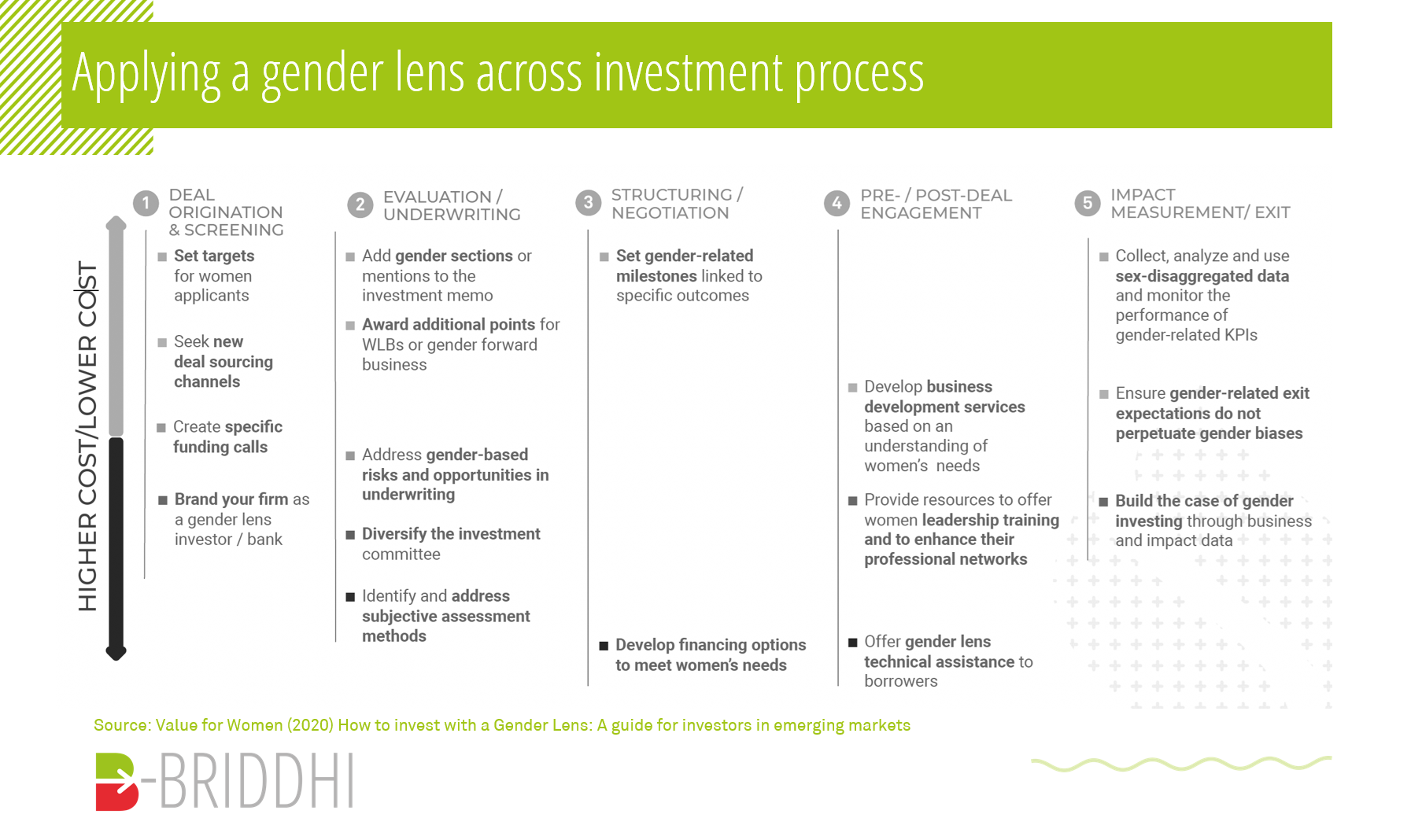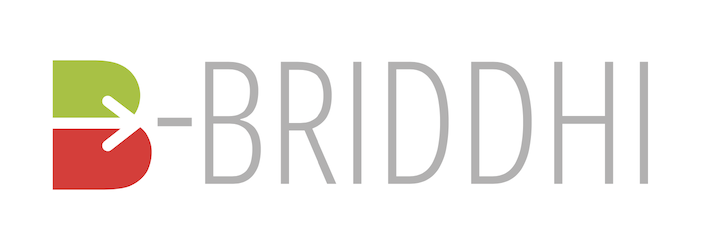Gender inclusion through investing – how can we do that?
With the concept of inclusive growth deeply embedded in the Biniyog Briddhi programme, we brought together a panel of investors, entrepreneurs, lawyers and intermediaries to share how impact can be amplified to improve gender inclusion through investments. The panel discussion was hosted on 2nd December 2021 and here come the main insights:

Gender lens: The state of play in Bangladesh
In the last decade, women have made tremendous strides in Bangladesh, stepping out of the home to participate in the economy. However, female entrepreneurs face formidable obstacles, such as difficulties in obtaining loans and start-up capital or the lack of formal support (such as sympathetic public policies, access to financial institutions, and professional training programs). To enable women to pursue successful business activities, the topics of gender inclusion and gender lens investing have gained momentum among the investor circle.
The following top-notch panellists shared much light on the definition of gender and gender lens, the impact of investing using a gender lens, and the overall gender inclusion scene in Bangladesh in our event on December 2, 2021:
- Sylvana Q. Sinha, Founder, Chair, & CEO, Praava Health
- Anita Ghazi Rahman, Founder and Managing Partner, The Legal Circle
- Nirjhor Rahman, CEO, Bangladesh Angels
- Bijon Islam, CEO, LightCastle Partners
- Maxime Cheng, Lead Market & Capacity Building Programs, Roots of Impact (moderator)
Defining gender and gender lens investing
Defining gender: Gender, as opposed to sex, is a spectrum and not a binary concept. It refers to a multitude of roles, behaviours, activities, and attributes. In the context of Bangladesh, gender lens or gender inclusion often refer to the inclusion and participation of women. Incorporating gender analysis into the investment sphere allows society to grow inclusively, with equity and fairness.
Defining gender lens investing (GLI): In fact, gender lens investing is much more than just investing in female entrepreneurs. Gender lens investing refers to a fundamental change in the decision-making process of investing by incorporating a gender analysis alongside the financial analysis. For example, with access to networks being a traditional barrier for female entrepreneurs to access investors, how can one design the deal-sourcing process in a way that ensures a wider reach beyond male entrepreneurs? Also, what are the KPIs and data that one shall keep track of in an investment, in order to stay informed about its progress in serving women or other marginalized groups of customers? All these steps are crucial to better align investment with the goal of gender inclusion.
“If the predispositions that society puts on women are removed, then women can perform at par with the other gender. While gender lens investing is more of a new concept to us, it will be very impactful if we can generate a gender lens roadmap for the businesses.”
Anita Ghazi Rahman
Founder and Managing Partner, The Legal Circle
Incorporation of a gender lens in the investment scene
Challenges faced as a female entrepreneur: Access to capital and fundraising are one of the biggest challenges that a founder has to face, which is aggravated further for female founders. Given that the majority of the investors are men, women often face aggressive questioning and probing when seeking funds. Female entrepreneurs generally have to be prepared for every negative scenario because of the undermining social effects of gender roles.
“It is challenging to raise investments as a female founder. We are raising the topic to create a community where women can find more support. Our advice to women: Find allies, not only with other women but also with men who understand the challenges that you are going through.”
Sylvana Q. Sinha
Founder, Chair, & CEO, Praava Health
Investors’ perspective: Investors and venture capitalists usually go through impact metrics or KPIs to identify businesses with environmental and social impact. These metrics, in the majority of cases, do not prioritize a gender lens analysis. Hence, gender inclusion dimensions are not adequately considered before any investment is being made. Focusing on supporting not only female-led businesses but also female investors to balance the ecosystem is therefore a priority. There is a need for a dedicated instrument for women-led ventures. Bangladesh Angels Network has been working on a women’s angel chapter, Bangladesh Women Angels Network ( BWAN) -, that will dedicate its work to the female-led business landscape in Bangladesh.
“We are working passionately towards gender lens investing – facilitating female investors and founders. At present, 30% of the founders in our portfolio are investable women-led enterprises, and we are also working towards improving the participation of female angel investors.”
Nirjhor Rahman
CEO, Bangladesh Angels
“Gender inclusion is supporting and rewarding the diversity in culture and professional structures. Gender lens investing supports both men and women who are in the decision-making roles of a company, based on our research data. Most importantly, gender lens investing is not just about focusing on women but also about reaching the vulnerable groups who do not have access to modern instruments.“
Bijon Islam
CEO, LightCastle Partners

Striding forward
While a gender lens should be applied more often in investment processes and decisions, we should also be aware of “gender-washing” and be diligent with financial analysis, too. Including a gender lens in the analysis makes the decisions more impactful for the business and the ecosystem. However, it is always recommended that investors take their time to analyze and make decisions based on data and logic. As was discussed during our event, the “Theranos/ Elizabeth Holmes” case can serve as a good example of why investing in a female-led company without thorough due diligence is not a good idea. For more context, please watch our GLI event recording.
In fact, beyond investments, equality in workplaces and the startup ecosystem play an essential part and shall aim to be bias-free. Women need to be empowered as entrepreneurs by improving the ease of doing business, creating workplace equity, and increasing access to the market and finance. In terms of the local ecosystem in Bangladesh, companies need to educate themselves on all the facets of the due diligence process and how an investment legally works. While a great pitch with a gender-inclusion narrative is part of the success, it does not guarantee an investment. A gender lens roadmap for existing companies can be a starting point for investors and founders alike to analyze the need for and the role of impact funding.
“Gender is more of a spectrum than a binary concept. When it comes to gender inclusion through investing, very often we think about investing in female entrepreneurs. However, there are many ways to support women in pursuit of entrepreneurship such as improving ease of doing business, creating workplace equity, and increasing access to market and finance. In a wider sense, we also need to empower women as consumers through women-focused products and services.”
Maxime Cheng,
Lead Market & Capacity Building Programs, Roots of Impact

Additional resources:
If you want to dive deeper into GLI, we highly recommend this resource: “How to invest with a gender lens: A guide for investors in emerging markets”


